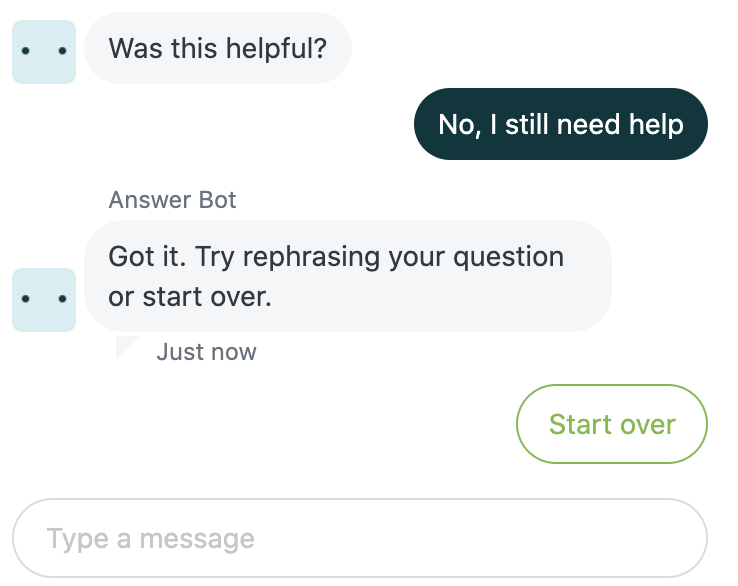85% of all customer interactions are already handled without a human.
Última actualización en January 26, 2025
So, chatbots for customer service are well and truly here to stay. But this shouldn’t come as a surprise given the advantages they can offer.

How chatbots can improve the customer service experience
When designed and implemented correctly, chatbots can be a valuable addition to your customer service team. They help you:
Be Available
One of the biggest advantages of chatbots is that they’re available 24/7. This means customers can get help whenever they need it–even outside of normal business hours.
A huge benefit for all businesses but even better news for those with international customers, as chatbots can provide support around the clock to suit different time zones. So you can be there for your customers no matter where they are in the world, even while you sleep.
Be Fast
Speed matters. Zendesk’s 2020 CX Trends report found that 72.5% of customers value a quick resolution to their issues above all else. What’s more, 58 per cent indicated a quick response from customer service was essential.
But fear not, a chatbot for customer service can help you live up to these lofty expectations. Chatbots are designed to automate simple tasks to optimise your support. Customers enjoy shorter wait times and a better overall customer service experience–because faster response times go hand in hand with higher customer satisfaction. After all, nothing says ‘we care about you' like a fast reply.
Be Efficient
Chatbots are great at handling simple questions, which frees up your customer service agents to focus on more complicated issues. This helps keep your business efficient and your customers happy.
But even when chatbots aren’t able to resolve a customer’s problem, they hand over seamlessly to a human agent–complete with conversation history so your customer service agent is already fully up to speed.
Be Informed
Chatbots also help businesses provide more personalised customer service by gathering useful information about customer preferences.
You can then use this information to improve the customer service experience by tailoring services to individual customer needs. And don’t forget: this information is worth its weight in gold to your marketing department.
Crosscard/Viabuy Case study
But enough talk (kind of), let’s see some action.

Here are two great examples of companies that have implemented and benefited from chatbots for customer service.
Crosscard provides digital payment products for B2B and B2C customers in the fintech space. Its B2B solution allows customers to manage their expenses in real time, scan receipts with an app, and generate expense reports. VIABUY–the company’s B2C solution–helps consumers organise their money and payments with digital accounts and cards.
The Luxembourg-based company has 20 agents in B2C and 10 agents in B2B that respond to customers directly. As fintech players in a dynamic market, both businesses need to be agile and responsive to customer needs. But Crosscard’s previous customer service system proved a headache for all and a growing problem that needed solving. In 2020, Crosscard therefore turned to Zendesk, implementing our Support Suite Enterprise solution across both its B2B and B2C businesses.
Crosscard was keen to automate as much as possible, which is where Answer Bot comes in. This AI-powered bot responds to customer questions with content from a knowledge base. It works alongside support teams to answer low-priority tickets but also knows when to get an agent involved. What’s more, this amazing helper is quick and easy to set up.
So, the benefits of Answer Bot were clear–and it hasn’t disappointed. Their latest team member has saved both time and resources. Answer Bot resolved 10,095 questions in the first year alone. And Crosscard estimated that Answer Bot saved agents from handling more than 5,000 extra tickets (assuming 50 % would have got in touch without the bot in place). Answer Bot also helped bring down first response times, with support teams now achieving their goals 90-95 per cent of the time. The numbers speak for themselves.
